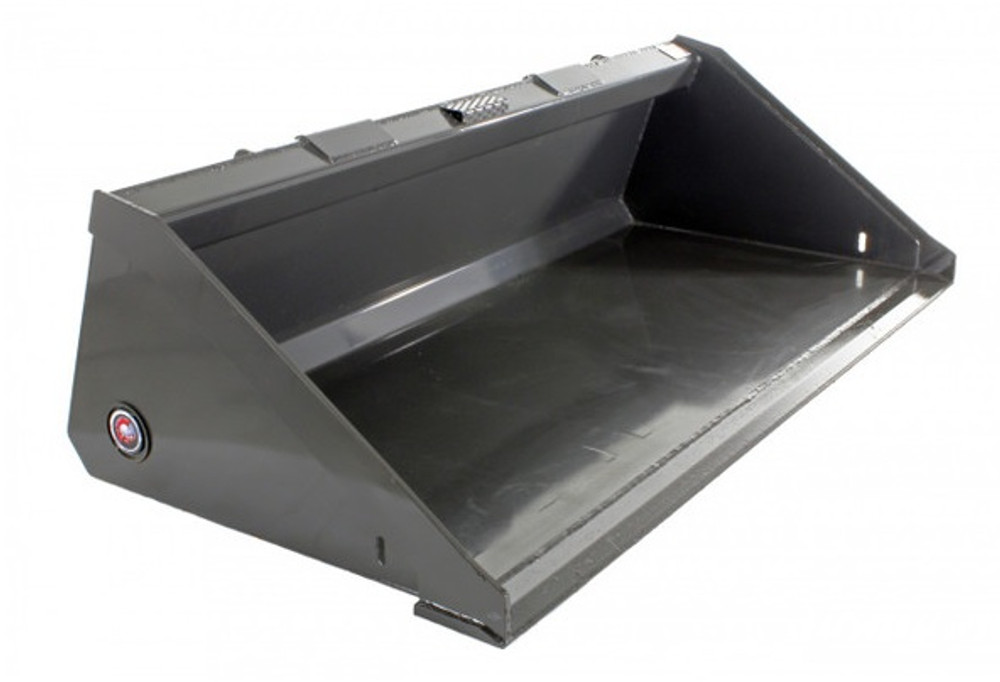Cleaning Up: Waste Management with Skid Steer Buckets
Posted by Lee Padgett on 10th Jan 2024
Waste management, a critical aspect of any construction or renovation project, often goes unnoticed. It's a behind-the-scenes operation that keeps sites safe, efficient, and environmentally responsible.
When it comes to essential tasks, skid steer buckets help tackle waste management with efficiency and finesse. They're the sloggers that clear debris, load dumpsters, and transform cluttered construction sites into clean, organized spaces.
The Importance of Waste Management in Efficiency
When it comes to construction, where time is synonymous with money, the efficient management of waste becomes a linchpin in the overall project timeline. Here's how:
Time Savings: Effective waste management minimizes downtime associated with sorting and disposal. Skid steer buckets, adept at swiftly loading and transporting debris, streamline the waste removal process.
Site Organization: A clutter-free construction site is an efficient one. Skid steer buckets play a pivotal role in keeping materials organized, ensuring that essential equipment and materials are readily accessible, reducing the time spent searching and retrieving.
Seamless Workflow: By integrating waste management into the workflow, skid steer buckets enable a seamless transition from one phase of construction to the next. This fluidity contributes significantly to the overall efficiency of the project.
Regulatory Compliance: Many construction projects have stringent regulations regarding waste disposal. A systematic waste management approach with skid steer buckets ensures compliance with environmental guidelines and local regulations, preventing delays due to legal issues.
Safety Measures in Debris Handling
The efficient handling of debris is not just about speed; it's equally about safety. Here's a comprehensive list of safety protocols for operators dealing with different types of waste:
Personal Protective Equipment (PPE): Before engaging with debris, operators must be equipped with the appropriate PPE, including gloves, safety glasses, and sturdy footwear.
Training and Certification: Proper training is paramount. Operators should undergo comprehensive training programs covering the safe operation of skid steer buckets in waste management scenarios. Certification ensures a standardized level of competence.
Hazard Identification: Each type of waste presents unique hazards. Operators should be adept at identifying potential dangers associated with specific materials, such as sharp objects, toxic substances, or unstable debris.
Secure Loading Practices: Skid steer operators must ensure that the load is securely positioned in the bucket to prevent spillage during transport. Overloading should be avoided to maintain stability.
Communication Protocols: Clear communication between ground personnel and operators is crucial. Establishing standardized hand signals or radio communication helps coordinate movements, reducing the risk of accidents.
Emergency Procedures: Operators should be well-versed in emergency procedures, including how to respond to equipment malfunctions, accidents, or unexpected situations. Quick and decisive action can prevent accidents from escalating.
Swift Site Clearance with Skid Steer Buckets: A Step-by-Step Guide
Clearing construction sites swiftly and efficiently requires a well-coordinated approach. Skid steer buckets, with their versatility and quick attach systems, are instrumental in achieving this goal. Here's a step-by-step guide for operators:
1. Pre-Operation Inspection:
Objective: Ensure the skid steer and bucket are in optimal condition.
Best Practices: Check for loose bolts, hydraulic fluid levels, and any signs of damage. A well-maintained skid steer operates more efficiently.
2. Assessing Debris Types:
Objective: Identify the types of debris on the construction site.
Best Practices: Different debris requires different handling. For instance, concrete rubble may need a different approach than scrap wood. Operators should be familiar with the materials they are dealing with.
3. Positioning the Skid Steer:
Objective: Optimal placement for efficient scooping and loading.
Best Practices: Position the skid steer for easy access to the debris. Consider the terrain and stability. The skid steer should be on level ground to ensure safe operation.
4. Swift Scooping and Lifting:
Objective: Efficiently gather debris into the bucket.
Best Practices: Utilize the skid steer's maneuverability to approach debris at the right angle. Swiftly scoop and lift, maximizing the bucket's capacity without compromising stability.

5. Controlled Transport:
Objective: Move debris to designated disposal areas.
Best Practices: Maintain control during transport. Avoid sudden movements to prevent spillage. Use the skid steer's joystick controls for precise handling.
6. Disposal or Sorting:
Objective: Efficiently dispose of or sort debris on-site.
Best Practices: Depending on the project, debris may be directly loaded into disposal containers or sorted for recycling. Skid steer buckets make this process quick and adaptable.
7. Quick Attachment Changes:
Objective: Adapt the skid steer for different tasks swiftly.
Best Practices: Take advantage of the skid steer's quick attach system to change skid steer attachments as needed. For example, switch from a general-purpose bucket to a grapple for handling bulkier materials.
8. Continuous Monitoring:
Objective: Ensure continuous workflow without interruptions.
Best Practices: Periodically pause to inspect the skid steer and bucket for wear or damage. Address issues promptly to avoid unexpected breakdowns.
9. Operator Communication:
Objective: Coordinate with ground personnel efficiently.
Best Practices: Establish clear communication protocols. Ground personnel can guide the operator, indicating where to deposit materials or signaling when the bucket is full.
10. Post-Operation Inspection:
Objective: Assess the skid steer and bucket for any wear or damage after site clearance.
Best Practices: This inspection ensures that the equipment is ready for the next phase. Any issues can be addressed during downtime.
By following these best practices, operators can leverage skid steer buckets to clear construction sites swiftly, ensuring a seamless transition to the next stage of the project.
More Than Machines—Efficiency in Skid Steer Buckets
It's easy to overlook the crucial role played by skid steer buckets. These attachments are more than machines; they're emissaries of efficiency, simplifying the intricate dance of waste management.
At Spartan Equipment, we have a commitment to quality and innovation when it comes to skid steer attachments, and continue to stand as a reliable ally in this field.
So, the next time debris needs clearing, consider skid steer buckets from us at Spartan Equipment and optimize your waste management efficiency to increase your level of success.



